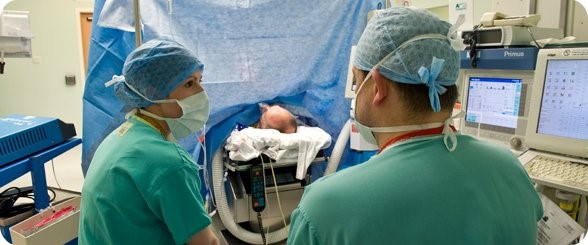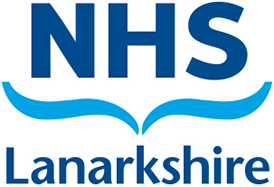
Your Anaesthetic
Your Anaesthetic
On This Page
Related Content

These pages contain information about the anaesthetic for your forthcoming operation. Anaesthesia allows your operation to go ahead without you experiencing pain.
What are Anaesthetists?
Anaesthetists are doctors with specialist training. They are responsible for giving your anaesthetic and for your well-being and safety throughout your surgery. They will try to make your experience as pleasant & pain-free as possible.
Types of anaesthesia
There are two types of anaesthesia: General Anaesthesia & Local Anaesthesia. The type of anaesthesia that is most suitable for you depends on a number of factors including your age, general health and the type of operation.
Before your operation, you will have an opportunity to discuss with your anaesthetist what form of anaesthesia is best for you. They will also discuss the risks of anaesthesia with you and agree on a plan for your anaesthetic & pain control.
How you will feel afterwards will depend on the type of anaesthetic and operation you have had, how much pain-relieving medicine you need and your general health.
A little deep sleep – A family guide to anaesthetics
What is General Anaesthesia?
General Anaesthesia gives a state of controlled unconsciousness that is essential for some operations. You are unconscious and feel nothing.
There are two ways of starting a general anaesthetic:
- Anaesthetic drugs may be injected through a cannula usually placed in a vein on the back of your hand or lower arm
- Anaesthetic gases and oxygen can be inhaled through a mask, which you may hold if you prefer
Once you are unconscious, an anaesthetist stays with you at all times and continues to give you drugs to keep you anaesthetized. As soon as the operation is finished, the drugs will be stopped or reversed so that you regain consciousness.
After the operation, you may be taken to the recovery room. Recovery staff will be with you at all times. When they are satisfied that you have recovered safely from your anaesthetic you will be taken back to the ward.
What is Local Anaesthesia?
Local anaesthesia involves an injection to numb an area of the body. Usually, the doctor gives this injection at the time of your operation.
Your anaesthetist will ask you to keep quite still while the injection is given. You may notice a warm, tingling feeling as the anaesthetic begins to take effect. Once your anaesthetist is sure that the area is numb, the operation will go ahead.
You will need to decide whether you would prefer to:
- be fully alert
- be relaxed and sleepy (sedation)
- have a general anaesthetic as well
If you are not having sedation you will remain alert and aware of your surroundings. A screen shields the operation site so you will not see the operation unless you want to.
Your anaesthetist is always near to you and you can speak to them whenever you want to. You can even bring music with you to listen to during the operation.
Local anaesthetic vs. general anaesthetic
The advantages of a local anaesthetic compared to a general anaesthetic are:
- Improved pain relief after your operation
- less nausea and vomiting
- you can eat and drink sooner after your operation
- feel less groggy afterwards
The disadvantages are:
- Occasionally the local anaesthetic block may not work. If this is the case we may need to use general anaesthesia
- You may feel the surgeon working in the numbed area without any discomfort
- You may not be able to move the area for some hours after the operation has finished and the numb sensation may feel strange
Spinal & Epidural Anaesthesia
Spinal and epidural anaesthesia are forms of local anaesthesia. They involve an injection between the vertebrae of the back. They are used for operations on the lower part of the body, for example abdomen or legs.
Spinal Anaesthesia
A spinal anaesthetic involves injecting local anaesthetic through a small needle into the fluid that bathes the spinal cord. The part of the body below the point of injection becomes numb. The numbness usually lasts between 2-4 hours.
Epidural Anaesthetic
An epidural anaesthetic is similar to a spinal anaesthetic. However, with an epidural, a fine tube is left in the fluid that bathes the spinal cord. This allows local anaesthetic to be given into the space. Epidural pain relief can last from a few hours to up to 3 days after the operation.
Pain Relief
Good pain relief is important and some people need more pain relief than others. It is much easier to relieve pain if it is dealt with before it gets bad. Pain relief can be increased, given more often, or given in different combinations.
Occasionally, pain is a warning sign that all is not well, so you should ask for help when you feel pain.
Here are some ways of giving pain relief:
- Pills, tablets or liquids to swallow
These are used for all types of pain. They take at least half an hour to work. You need to be able to eat, drink and not feel sick for these to work.
- Injections
These are often needed and are given into a vein for immediate effect, or into your leg or buttock muscle. If in a muscle, they may take up to 20 minutes to work.
- Suppositories
These waxy pellets are put into your back passage (rectum). The pellet dissolves and the drug passes into the body. They are useful if you cannot swallow or if you might vomit.
- Patient controlled analgesia (PCA)
This is a method using a machine that allows you to control your pain relief yourself. If you would like more information ask for a leaflet on PCA.
- Local anaesthetics
Local anaesthetic blocks including spinals and epidurals can help relieve pain after surgery.
How safe are anaesthetics?
Modern anaesthetics are very safe, but the risk will vary depending on each individuals health, personal factors such as smoking or being overweight, the procedure and the anaesthetic technique used.
Each person will vary on how they interpret risk. The scale below is provided to help give some understanding of the different risks:
- Very common (1 in 10) and common (1 in 100) side effects
Feeling sick and vomiting after surgery, sore throat, dizziness, blurred vision, headache, itching, aches and pains, pain during injection of drugs, bruising and soreness, confusion and memory loss. - Uncommon (1 in 1000) side effects and complications
Chest infection, bladder problems, muscle pains, slow breathing (depressed respiration), damage to teeth, lips or tongue, an existing medical condition getting worse, awareness (becoming conscious during your operation). - Rare (1 in 10,000) or very rare (1 in 100,000) complications
Damage to the eyes, serious allergy to drugs, nerve damage, death, equipment failure.
Deaths caused by anaesthesia are very rare, and are usually caused by a combination of 4 or 5 complications together. There are probably about 5 deaths for every million anaesthetics in the UK.
NHS inform
NHS inform is a national health information service for Scotland, providing quality assured health information for the public. The NHS inform website provides information about illnesses, tests, treatments, operations and services. Contact NHS inform on 0800 22 44 88.
Your Feedback – comments, concerns and complaints
NHS Lanarkshire is committed to improving the service it provides to patients and their families. We therefore want to hear from you about your experience. If you would like to tell us about this please visit our feedback page.

